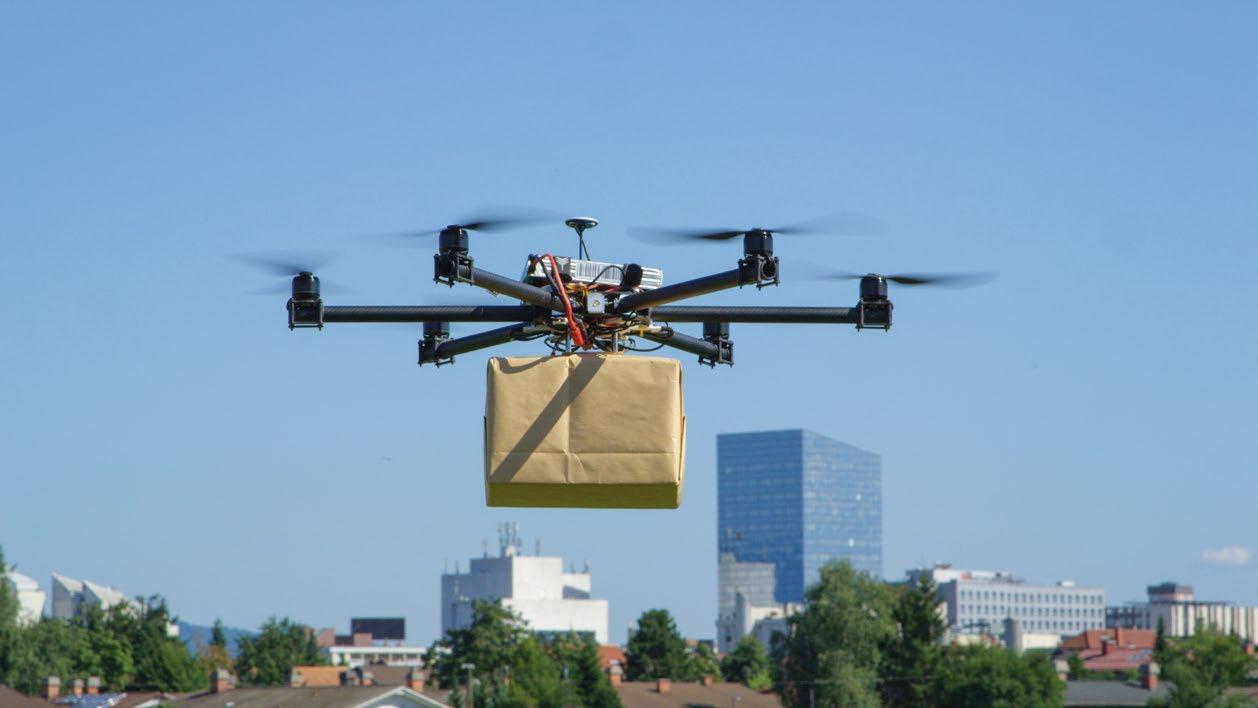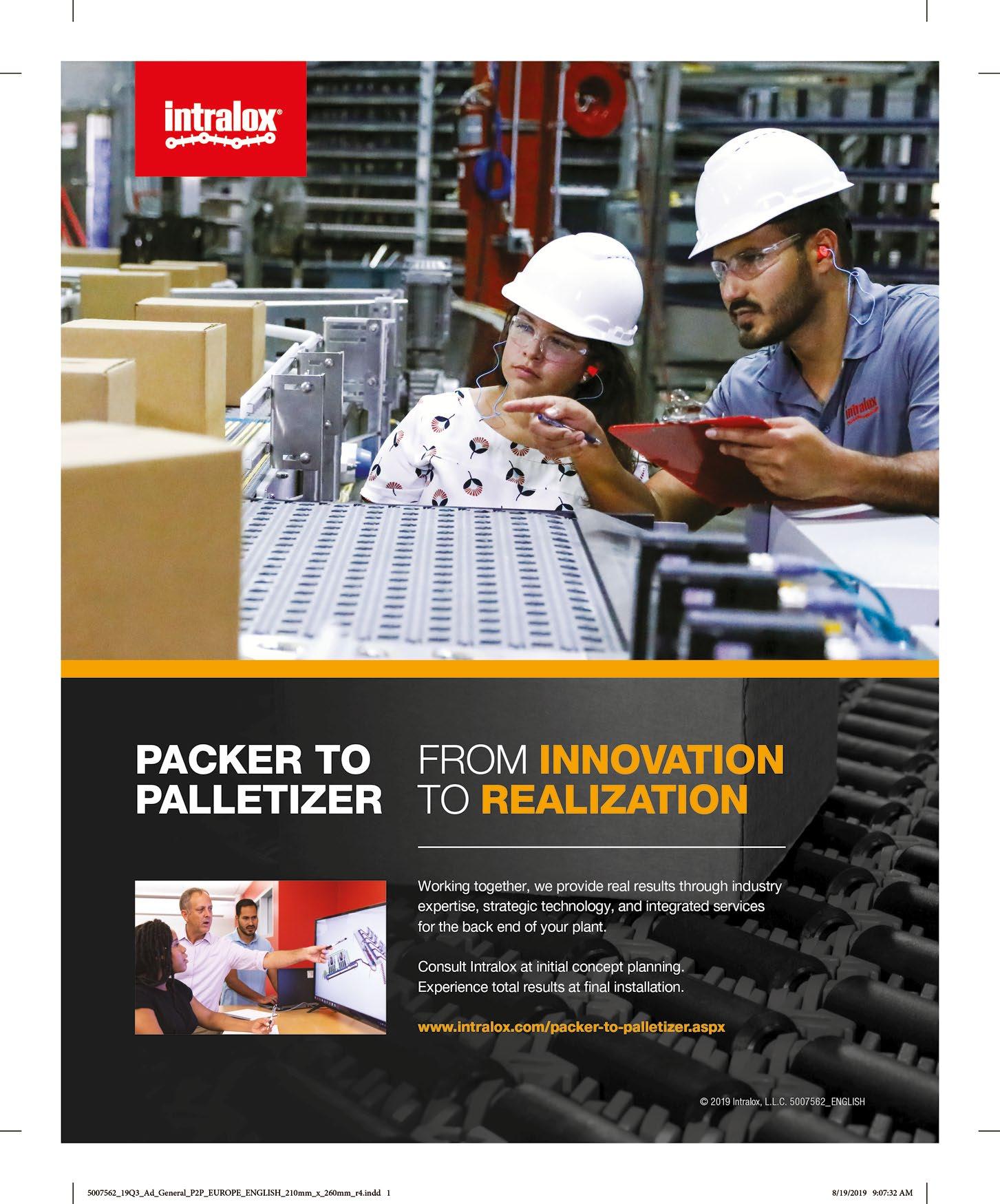
8 minute read
The future of drones and packaging
THE FUTURE OF DRONES AND PACKAGING
Libby Munford speaks with Robert Garbett, founder and chief executive of The Drone Major Group, an independent drone advisory service, about the future of the drone industry.
Advertisement
LM: First things first, I’d like to ask you a very simple question: what is a drone?
RG: A drone is any unmanned system that is autonomously or remotely controlled in any environment, be it on the earth’s surface, underwater, in the air, or in space. So it’s a very wide spectrum, and you have to encompass all of those spaces if you want to solve a problem effectively – the answer isn’t always a little flying drone.
LM: Can you tell me more about the Drone Major Group?
RG: We were founded in 2017 with the initial drive to unite all the stakeholders in the industry, across all the areas we cover. Within three to six months, it became clear to us that there really was a need for advisory

services, so we set up our consultancy in 2018 and, since then, have been advising companies around the world on how they can adopt autonomously or remotely controlled systems.
Essentially, we’re trying to help them solve a problem. This is usually either where an activity is currently being carried out by humans, or when a company would like to get something done but can’t with the technology they currently have. So, we provide strategic guidance on what is possible.
We then help them build the implementation plan around that strategic guidance, and we also have the largest network of suppliers in the drone industry in the world to help with implementation.
LM: I’ve read that you come from a military background – did this spark your interest in drones?
RG: I was an aeronautical engineer in the military but, due to injury, I got into policy. After this, I set up a company that invested in companies that needed technology. One of the organizations I invested in was called SUAS – the Society for Unmanned Air Systems, that I supported for several years with technology, guidance, and marketing.

After that, I was introduced to the British Standards Institution (BSI), because we were looking at developing a kitemark for UK drone operators, and it became clear very quickly that all eyes were on activity at the International Standardization Organization, which was then writing the standards for safety and quality for all unmanned air systems.
BSI asked if I wanted to represent the UK, which I did, so I helped form and shape those standards and I now sit on every committee at that level. I also now chair the BSI committee. This journey has taught me so much about the civilian industry, to add to my military background.
LM: Am I right in thinking that this is still a relatively new industry to be pioneering?
RG: It is – it’s an incredibly fast-moving industry, and I think it suffers from problems associated with that. There’s very little knowledge from the user community regarding what is possible, and there are also lots of companies out there who are selling their wares. Sometimes, the selling gets in the way of the problem solving, so it became obvious that we needed to exist to bridge that gap.

LM: This year has obviously been a bit of a curveball with the coronavirus pandemic. I’m interested to hear what kind of impact this has had on the drone industry.

RG: Plenty of companies went quiet during Covid-19 – us included. Overall, while many companies have suffered, I think that the drone industry as a whole will benefit. What it has brought to light is the great utility these systems bring in terms of pharmaceutical logistics – an area that we are very interested in.
It makes sense because, if you don’t have humans involved in the delivery, you can assist with communities and individuals that are isolating. There are also other capabilities that could benefit law enforcement or medical services in the long term.
LM: Aside from the pandemic, I’m sure there’s been some cases of charitable ways of getting essential items to people through the use of drones – is that something that you can talk about?
RG: A number of projects have been launched during the pandemic to assist with delivering medical supplies using fixed-wing systems from airport to airport. The sort of projects that we are looking at in this space deal with the delivery of treatments where certain compounds have a very short shelf-life, and delivery is very expensive using just-in-time couriers. We’re looking at the possibility of using air drone systems to speed this process up and make it cheaper.
On top of this, you’ve also got the mid-mile, which is the depot-to-depot delivery of supplies, but we’re not typically interested in last-mile delivery unless it’s for particular locations like hospitals or clinics.
If we’re looking at anti-viral serums, for example, most locations have a limited ability to store many of these, especially if they’re stored in syringes. If you can automate a regular supply of these serums to hospitals or clinics on a regular basis, throughout the day, then you remove the problem of them running out of stock.
In the future, things like the medical delivery of casualties could become a possibility. A vehicle could land on-site, collect the casualty, and take them straight to hospital. The list of applications goes on and on.
LM: Throughout the pandemic, what has Drone Major been focused on?
RG: In the last few months, we’ve been very much focused on a project that we’re working with one of our clients on. Unfortunately, I can’t name the client, but they are a very large European logistics company. We’re working on creating a test and development area for mid-mile delivery.
This goes back to the recommendations that came out from the Drone Delivery Group, which I founded back in November 2018, to deliver a white paper to the government that outlines the ways in which we want them to commercialize the industry. All of the things that we learn from the test and development area project will be fed back to the regulators and standard makers.
Aside from the delivery of the project itself, we’re also working on the security, cybersecurity, insurance, and PR.
LM: Looking more specifically at the packaging industry, I’d like to hear your thoughts on how drones can be used to deliver products and make logistics more efficient.


RG: The natural progression of this particular application is to start big. I think the hype that has been brought about by companies like Amazon has led people to think that they are going to have parcels delivered to their doorstep. As time goes on, I think last-mile delivery will become a reality, but not in the ways that people think. It’s more likely that we will see freight delivered by an autonomous vehicle with someone in it.
Mid-mile, hub-to-hub delivery is more realistic. This takes ‘white vans’ off the road, and starts to move some parcels by air, autonomously. This will change the industry entirely, as we will have to adapt to this system.
I’d be very interested to talk to anyone in the packaging industry regarding the use of autonomous vehicles of any kind, and perhaps even about involving them in the projects we are running at the moment, because it’s really important that we get the whole development process right.

LM: What are the possibilities for the next five to ten years?
RG: From our perspective, we want to have a significant number of test and development areas set up in the UK in the next five years. We’re looking at utility – not thousands of drones flying around. Isolated sites would be used, as opposed to individual households, because the infrastructure just isn’t there to enable that, especially in cities.
There’s a lot of this activity going on around the world – China has always been very active in manufacturing and applications. Japan is also very active, especially in the field of unmanned traffic management systems.
The UK has always been at the forefront of the thinking in this industry, certainly our involvement has been crucial in the development of international standards. I believe that we have the knowledge now and would like the government to take some bold steps to take the initiative and drive it forward. I want to see full commercialization within the next five to seven years.
Passenger carrying systems are going to take a little bit longer as the safety requirements are huge, so this could happen withing the next ten years.
LM: Do you have a final message for anyone in the packaging industry that is interested in this emerging technology?
RG: There’s a great white paper on the Drone Delivery website that I would recommend people read. Beyond that, I would ask people to get involved! Everything that you’ve been hoping will come at some point is now possible and, with the right advice and guidance, this technology can bring great benefits. n



